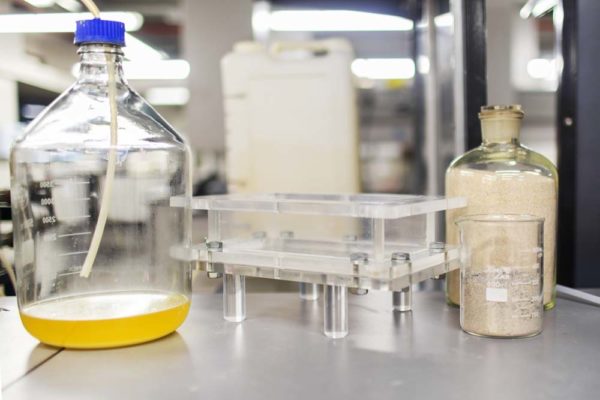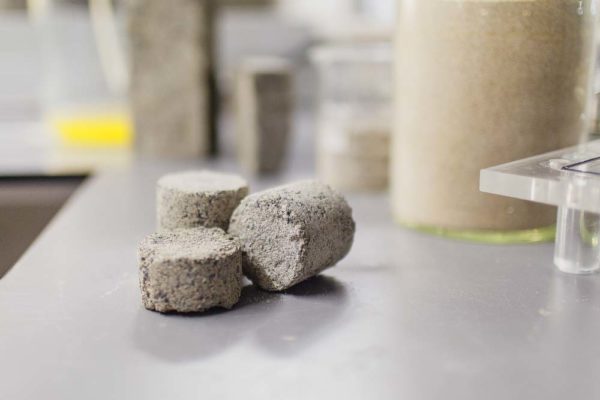The world’s very first bio-brick was recently unveiled by University of Cape Town (UCT) master’s student in civil engineering, Suzanne Lambert. This discovery in waste quality engineering makes use of human urine to create environmentally friendly bricks.
The bio-bricks are created through a process called microbial carbonate precipitation and is similar to the way that seashells are formed.
“In this case, loose sand is colonised with bacteria that produce urease. An enzyme, the urease breaks down the urea in urine while producing calcium carbonate through a complex chemical reaction. This cements the sand into any shape, whether it’s a solid column, or now, for the first time, a rectangular building brick,” A senior lecture in water quality engineering at UCT, Dr Dyllon Randall explains the process.
Randall is also Lambert’s supervisor.
“The development is also good news for the environment and global warming as bio-bricks are made in molds at room temperature. Regular bricks are kiln-fired at temperatures around 1 400°C and produce vast quantities of carbon dioxide,” he added.
The strength of a bio-brick can also be adjusted to the needs of the client, as the bacteria found within the brick determines its strength.
“If a client wanted a brick stronger than a 40% limestone brick, you would allow the bacteria to make the solid stronger by ‘growing’ it for longer,” Randall said.
The concept of using urea – which is found in urine – to grow bricks was tested in the United States of America several years ago, but made use of synthetic urea. Lamberts’ brick comprises of urea collected from human urine. Her work builds on foundational research by Jules Henze, a Swiss student who spent four months helping Randall develop this concept in 2017.

Randall refers to urine as ‘liquid gold’ as it accounts for less than 1% of domestic wastewater, but contains 80% of the nitrogen, 56% of the phosphorus and 63% of the potassium found in this water. These are also the chemical components that make up commercial fertilisers.
Approximately 97% of the phosphorus found in urine can be converted into calcium phosphate, and this is significant as the world’s natural phosphate reserves are running dry.
The urine is collected from fertiliser-producing urinals and used to make a solid fertiliser. The remaining liquid is then used in the biological process to grow the bio-brick.
“But in that process, we’re only after two components: carbonate ions and the calcium. What we do last is take the remaining liquid product from the bio-brick process and make a second fertiliser,” Randall explained.

The overall scheme would effectively result in zero waste, with the urine completely converted into three useful products.
“No one’s looked at it in terms of that entire cycle and the potential to recover multiple valuable products. The next question is how to do that in an optimised way so that profit can be created from urine,” he added. “At the moment we’re only dealing with urine collection from male urinals because that’s socially accepted. But what about the other half of the population?”
According to Randall, the work is creating a paradigm shift in the way that society views waste and the upcycling of waste. “In this example you take something that is considered a waste and make multiple products from it. You can use the same process for any waste stream. It’s about rethinking things,” he said.
Picture: UCT

